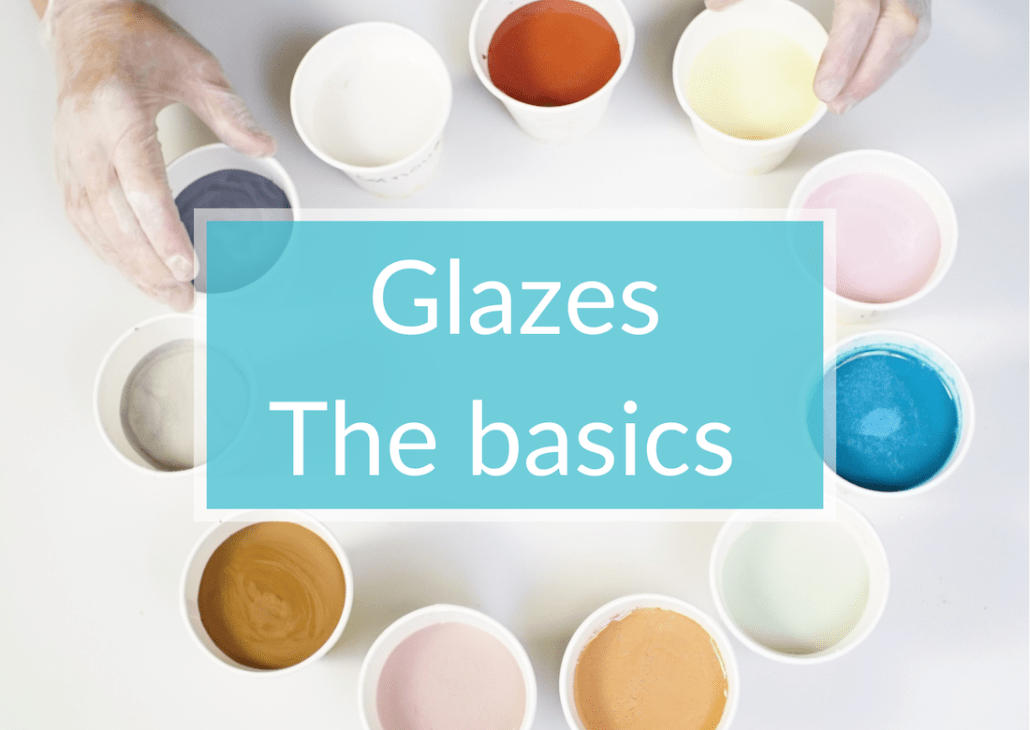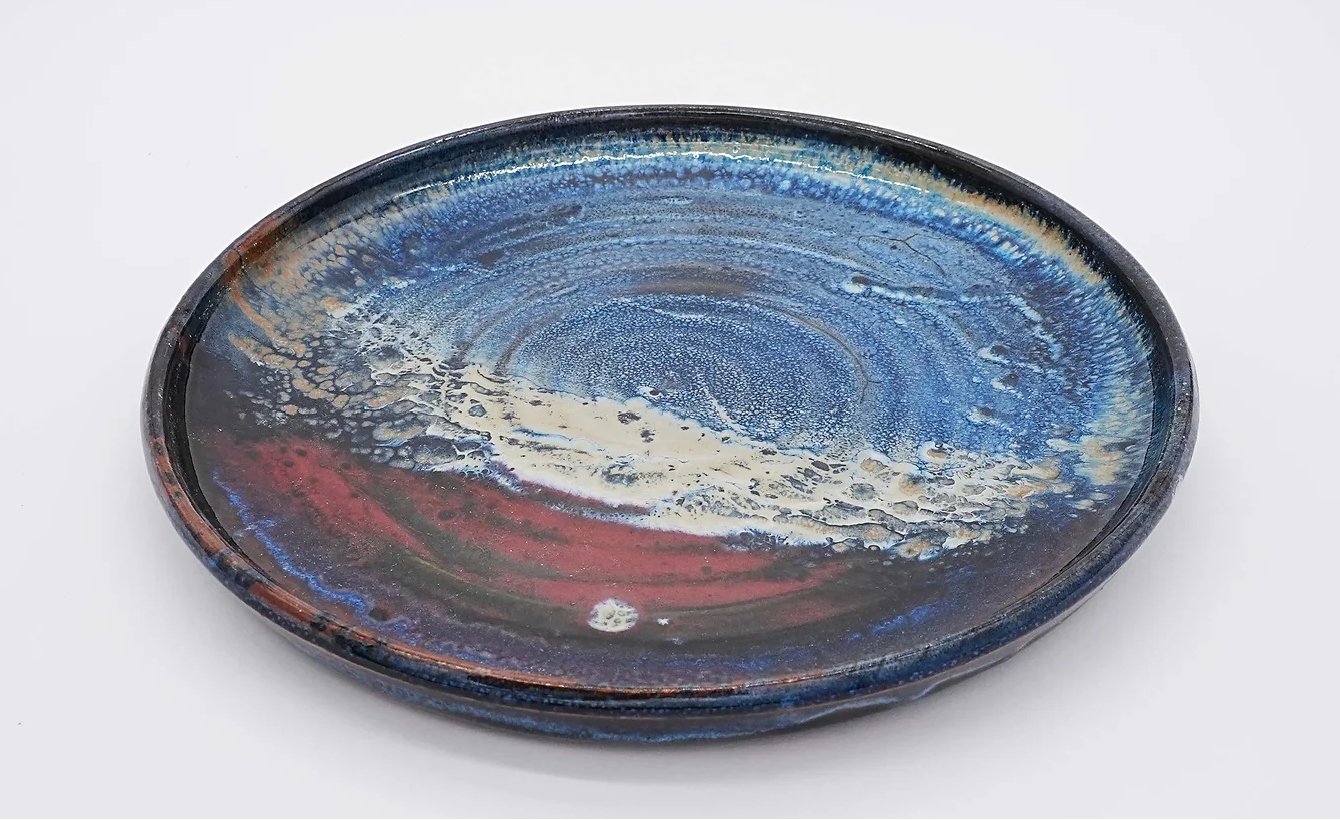Ceramics: a creative play on light
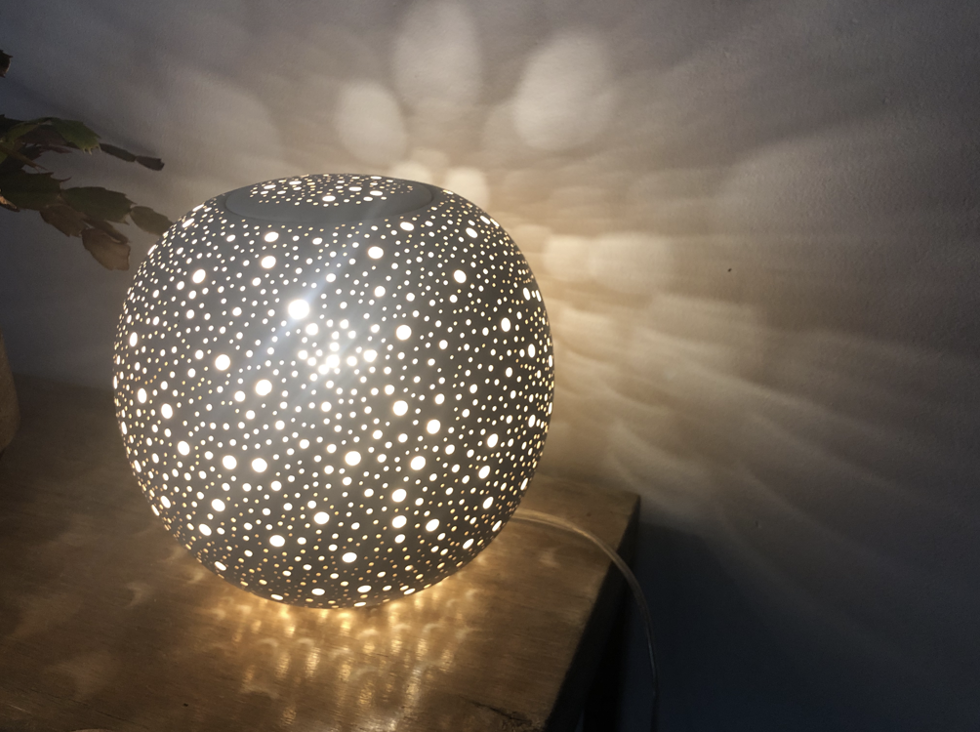
Summary
1 — Porcelain, the queen of translucency
2 — Glazes: vitrification and transparency effects
3 — Ceramics: sculptors of light and creators of ambiance
4 — Light sources: safety rules
Introduction
For any artist, light is much more than a simple source of illumination; it is the medium that reveals each work of art. Ceramic creations reveal their beauty through the subtle play of light.
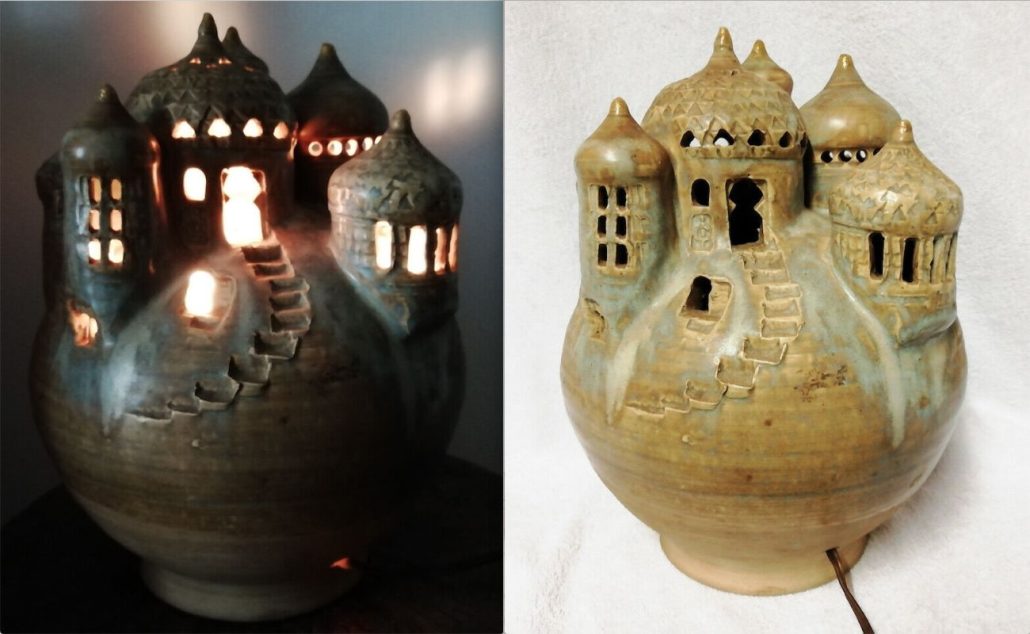
Light gives a whole new dimension to these ceramics.
In a previous article, we addressed the issue of light in the world of ceramics, affirming the need for optimal lighting in the studio – necessary not only for your comfort, but for the quality of your work.
In a second article, dedicated to creating visuals, we talked about the need for controlled use of light when making photographs and films to be posted on a website or social media.
However, light in ceramics transcends these two utilitarian roles. It is not only a tool, but a source of inspiration. Every time we unload a kiln, our reflex as potters is to let light play on our pottery! Light shapes the look of our glaze, it guides our choice of materials and influences how we design our pieces.
Whether it’s through translucent pieces, transparency effects inherent in certain glazes, or the creation of ceramic lamps, potters use light to enhance their work, taking it beyond the limits set by technical constraints.
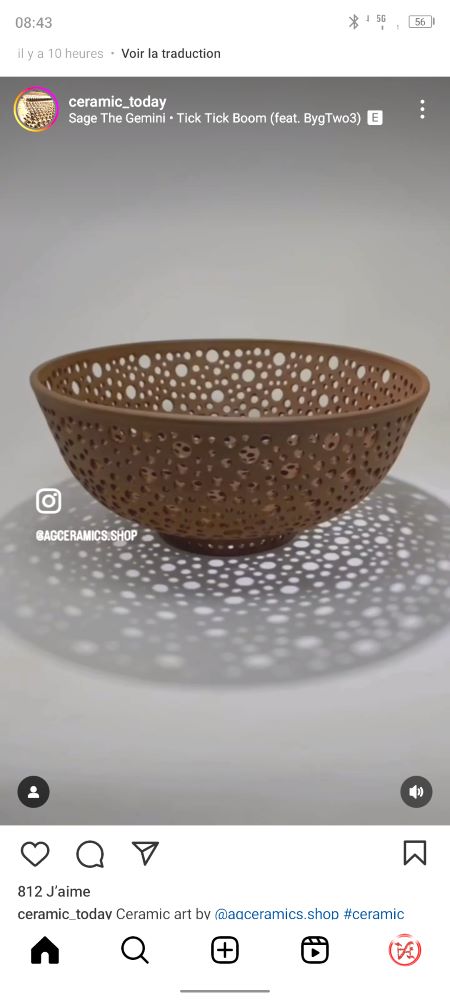
image shared on Instagram by loveinpottery
Follow us in a new article on the interplay of light and ceramics
1 — Porcelain, the queen of translucency
In translucent ceramics, light passes through the walls of the piece, revealing details sometimes invisible to the naked eye and giving the object a new dimension. Porcelain is undoubtedly one of the materials best known for its translucency. The very structure of porcelain with its high degree of vitrification allows extremely thin walls that let light through. Although porcelain pieces are very fine, they remain very strong.
Admiring a piece of porcelain is a pleasure, but discovering it bathed in light is a marvel!

The “grain of rice” technique is used to complement porcelain’s tranlucence. The “grains of rice” are obtained by reducing the thickness of the clay by area, allowing a pattern to appear with the translucency of the procelain. This process is very familiar: we have all seen classic tea sets that let light pass through transparent patterns alongside the fine decorative motifs.

Applied to light fixtures, this property of porcelain can become fascinating. We are no longer content with patterns the size of a grain of rice: it’s possible to make the patterns much larger, and to play with colours. On her website, Laurence Thomas presents beautiful porcelain light fixtures, and shares the manufacturing process behind them. In her work, Laurence Thomas uses porcelain as a diffuser. Her lamps transform direct light into a soft glow. This creates a warm, welcoming ambience.
2 — Glazes: vitrification and transparency effects
If the main objective of glazing is to protect ceramics, it also involves research into colour and texture that will please the eye and the touch. It also plays a key role in translucency. When a transparent glaze fills a hole or a crack, it allows light to pass through. This property demonstrates the truly glass-like character of glazes: Glazing and the vitrification technique are, in fact, the same technique. This is why there is a magazine called “La Revue de la céramique et du verre“ (Review of Ceramics and Glass).
The transparency of glaze can be exploited on clay other than porcelain, since it involves filling a hole. This process is particularly useful for making tealight holders:
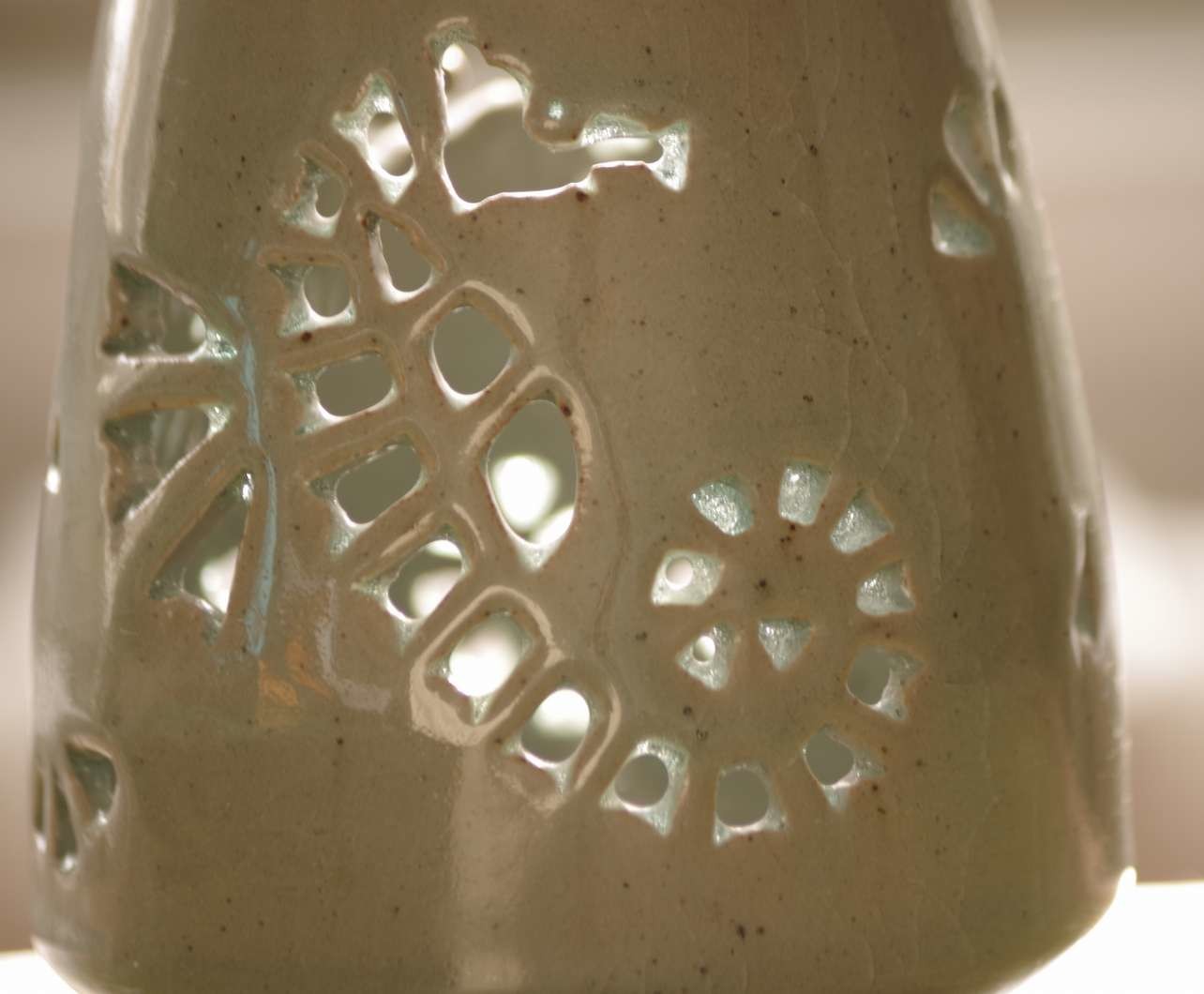
In this photo, the transparent glaze has filled the smallest holes in the seahorse, emblem of the Breton district of Morbihan, creating the effect of tiny stained-glass windows. Without completely plugging the other holes or altering the design, the glaze remained thick in the nooks and crannies, softening angular shapes while letting the light through. The glaze was applied to Saint-Amand GSA stoneware, a dark stoneware. All the transparency comes from the glaze. This glaze is based on diagram 9 in Daniel de Montmollin’s book “Les émaux de grès”.
If a small percentage of iron oxide had been added to this glaze, we would have obtained the same transparency, but with a soft green shade, adding softness to the whole piece and to the light that emanates from it. The soft green on the picture below is a celadon obtained in reduction firing. If you have an electric kiln, use copper carbonate, and a very pretty green will also develop!
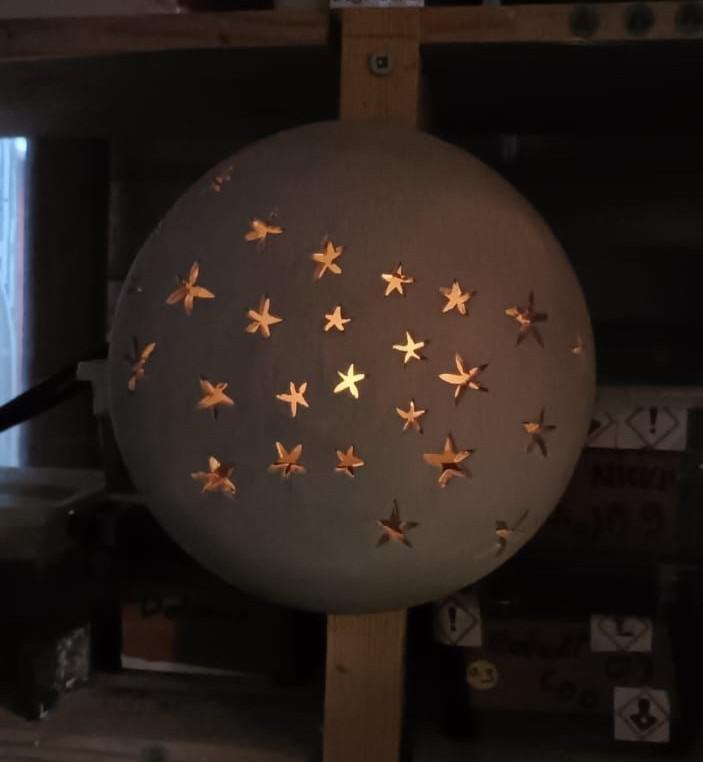
A tealight holder reveals all its beauty when lit from within. The object needs to remain beautiful even when not lit: find a way to bring out the design through an appropriate choice of glaze. Tenmoku lends itself perfectly to this type of object. It’s a Japanese dark-brown glaze, very easy to make. We use the diagram 33 in Daniel de Montmollin’s book “Les émaux de grès”. A feature of tenmoku is that it retracts at the edges. Here is a candle jar glazed with a tenmoku glaze:

Twirling leaves and snails: the autumnal mood is reinforced by the choice of a dark brown tenmoku that becomes light brown at the edges.
3 — Ceramics, sculptor of light and creator of ambiance
A ceramic piece is not just about form and function. It’s also about how it interacts with light and changes the mood of a room . . . the play of shadows, lamps in a variety of shapes…
- Contrasting shadows: we’ve just been talking about openwork or cut-out pieces whose beauty is revealed when lit from inside. But those openwork patterns, when light shines through them, can also be projected onto shelves or walls, creating aesthetic contrasts of light and shadow. The projected image becomes an artistic extension of the work itself.
CeramicsToday‘s Instagram account shares many creations, here are those by “baked.in.clay”:
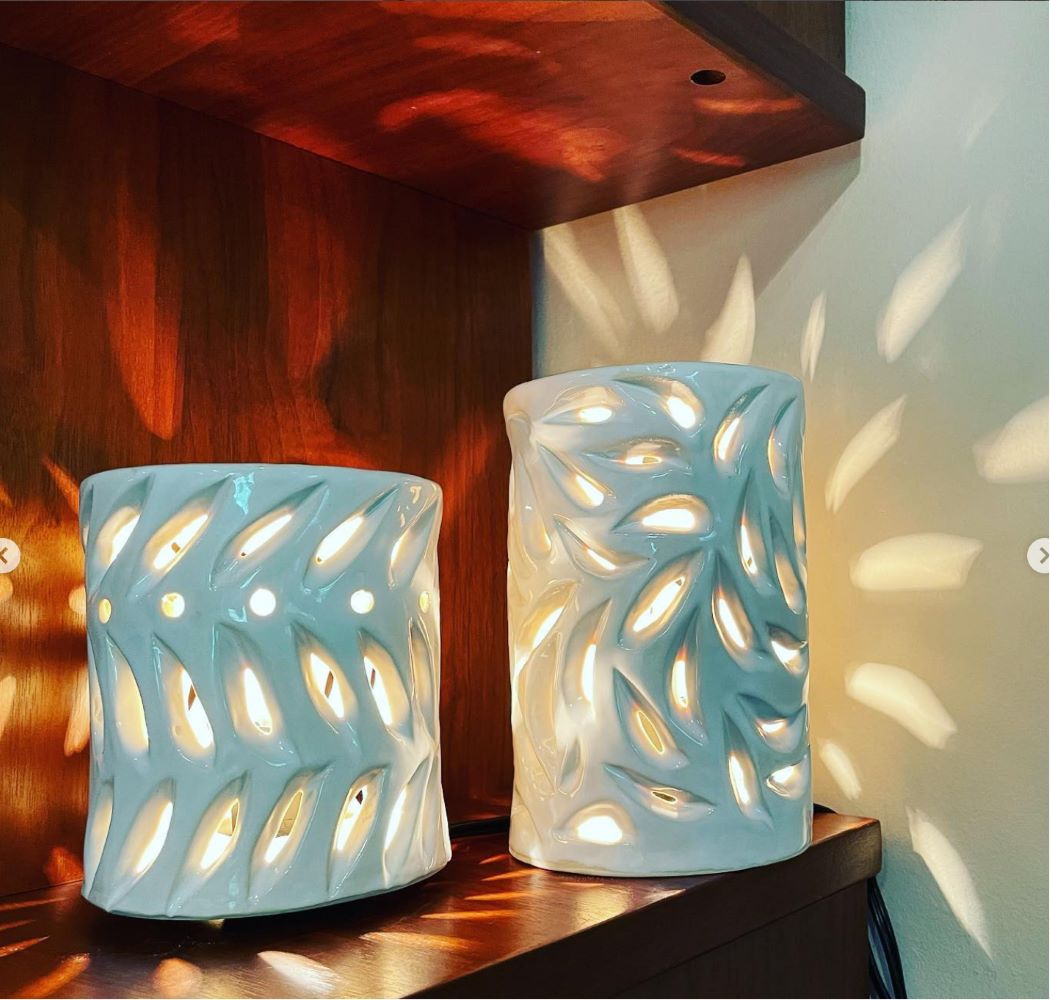

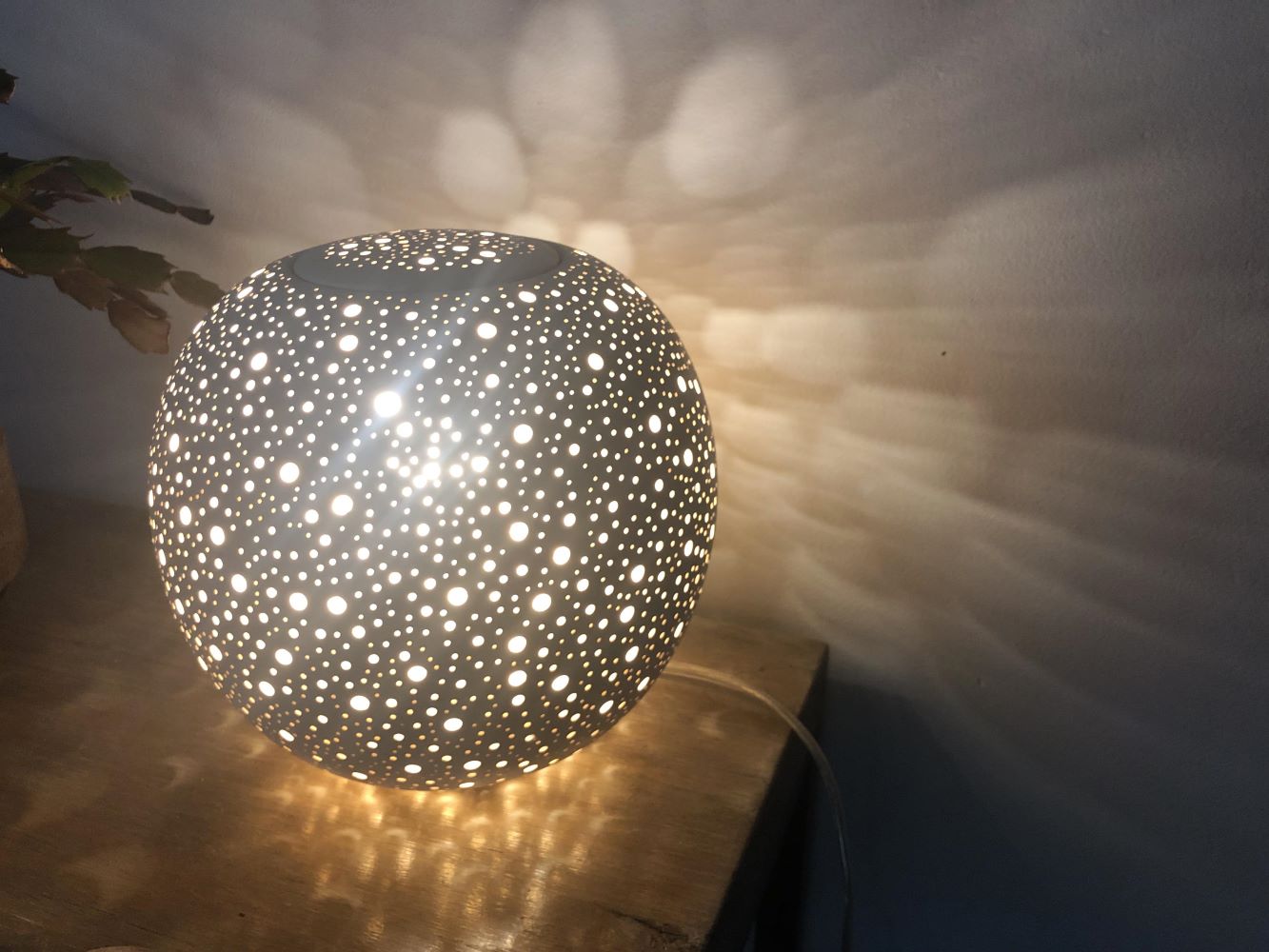
by ceramist Petra Bourgeois
You can also play with the shadow of the pottery. Placing a piece of pottery close to a light source will cast a shadow of the shape of the pot on the walls. It can create a warm, welcoming or eerie atmosphere…
- Lighting fixtures: the play of light on pottery can inspire the design of lamps. . It can give rise to original and resolutely modern creations: “Mud Century Modern” posts his lighting creations on instagram, sharing his working process. Here’s a fascinating example of his work:

I cannot encourage you enough to discover his work. This artist, notably through his light fixtures, shows to what extent it is possible to produce contemporary works from a classic technique.
4 — Light sources: safety rules
We often talk about safety, and we will talk about it in this article as well! When we integrate an electrical system into our work, we need to be aware of the precautions to take to avoid accidents.
Here are a few important tips:
- Safety distance: as we mentioned earlier, light sources illuminate a ceramic piece to create shadows. Be sure to maintain a safe distance between them. The heat generated by certain types of lighting can cause unexpected damage, such as cracks or thermal stress on fragile parts.
- Choice of lighting: for light fixtures, it’s best to choose sources that emit less heat, such as LEDs.
- Safe electrical handling: electricity and ceramics can be a dangerous mix, especially if you try out your electrical installation on a piece that’s not quite dry. In fact, it’s necessary on a prototype to check that the electrical system fits well into the lamp, and sometimes you’re simply impatient to see what effect the lamp will give. This must not be at the expense of safety.
- Compliance of electrical installations: every component, including wires, switches and sockets, must comply with current safety standards. Your electrical installation must comply with local regulations, especially if you’re shipping abroad. This means using approved components. Assembly must also be checked by an electrician. It’s not just a question of compliance, it’s a guarantee of safety for your customers, and therefore for you and your reputation.
For candles and candleholders, here are a few additional safety tips:
- Stability: your lamp must be stable, with no risk of tipping over. The bases of candle or tealight holders should be solid and even a little heavy to prevent accidental overturning of the burning candle.
- Heat-resistant materials: some glazes and clays can deteriorate under the heat of a flame, so it’s important to choose the right materials. In addition, a candle jar can become very hot, so be careful when holding it with bare hands.
- Supervision: never leave a burning candle unattended, especially near flammable materials, and keep a clear space around the candle holder (I’m thinking of Christmas trees…). Always extinguish candles before leaving a room or going to sleep.
- The snuffer: rather than blowing out a candle, use a snuffer. It prevents the hot wax from dispersing and reduces the amount of smoke produced by extinguishing the flame.
- Quality candles: good quality candles burn cleanly without causing safety problems.
Conclusion
Light is much more than a simple staging element; light reveals the essence of each creation.
Porcelain, with its delicate translucency, and glazes capture and change light. By ensuring that light sources are used safely, potters can open up an extraordinary space for creativity. It is in this balance between creativity and responsibility that ceramic art can flourish and continue to amaze.

Resource centre
animated by Matthieu Liévois,
potter-ceramist for over 40 years and founder of the Creamik School
Find all the courses
Keywords
Don’t miss any more news from the Créamik school!


